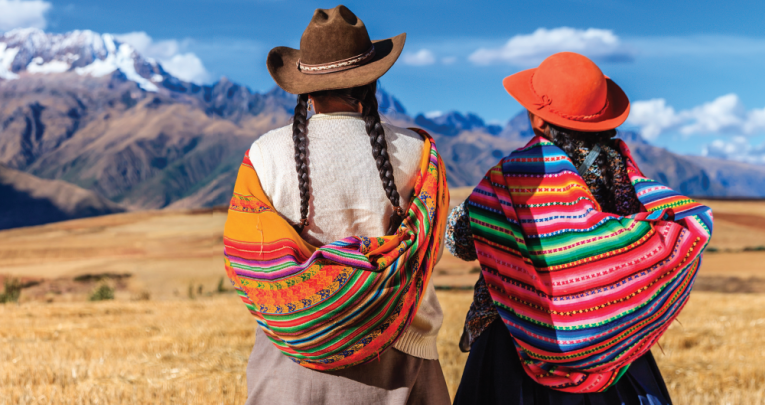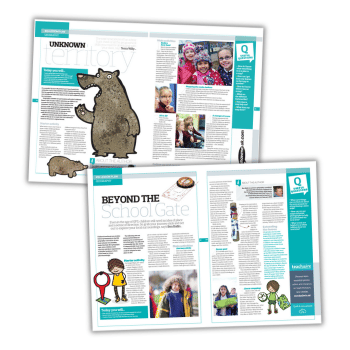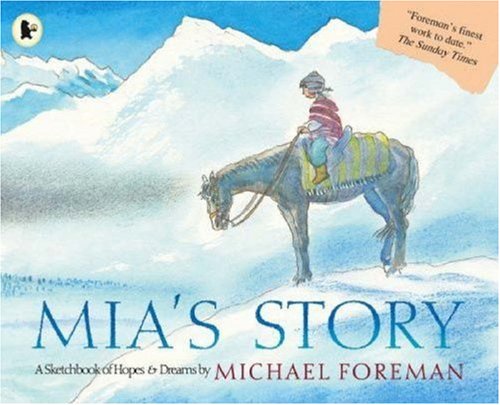KS2 Geography Lesson Plan – What’s It Like Growing Up In Chile?

Use a beautiful picture book and Ben Ballin's plan to whisk pupils to a snowy mountain village in South America

- by Ben Ballin
- Freelance educational consultant and writer, specialising in geography

This lesson uses Mia’s Story by Michael Foreman to develop an empathetic view of a mountain village in Chile.
The activities could also be used for other picture books with high quality illustrations and will develop children’s place knowledge through careful and critical observation of the village’s distinctive human and physical features. They will also contribute to children’s understanding of the Andes region.
The village-level scale works best as part of a series of lessons looking more widely at the region, and making comparisons to other places.
What they’ll learn
- Use a picture book to understand life in a Chilean village
- Use geographical language to describe the village’s features
- Compare your own area to the village
- Think critically about how we ‘read’ images of unfamiliar places
Starter activity
 Show the children the book cover of Mia’s Story by Michael Foreman and explain that it tells the story of a little girl that the writer once met.
Show the children the book cover of Mia’s Story by Michael Foreman and explain that it tells the story of a little girl that the writer once met.
We are going to find out about her home in the mountains in Chile.
Working in small groups, give each group a colour photocopy of a double page spread from the book, with the text obscured. Each child draws a stick person image of themselves on a post-it note, and places the note on the page to put themselves in the picture.
In pairs, discuss what it would be like to be ‘in’ the picture. What would you see, hear, smell, taste or feel? Note down some key words to share with the class.
Main activities
1 | Frozen moments
In groups, ask children to work together to complete a fresh post-it as a ‘word bubble’ for someone in the picture (this could be a human, but animals can sometimes talk in stories). Once they have created the word bubble, they create a ‘thought bubble’: this could be for somebody different or the same figure.Remember, people do not always say exactly what they are thinking!
Ask the children to choose one person from their group to be a ‘photographer’. Their task is to work with the group to recreate the image in the picture as accurately as they possibly can. Look carefully at the posture of Mia and other people in the image.
Can we get our hands in exactly the same position? What about the expressions on our faces? Use chairs and tables to help recreate the image as required. Children who are not in the picture can help the photographer by checking the frozen photo for accuracy. When the photographer is happy that the image is exactly right, she steps back and the children in the picture hold the image.
The photographer can now invite another child to thought track the image.
They step forward and touch one of the children in the picture on the shoulder, then ask them a question.
This might be about what they can see or sense, or what they are thinking or feeling.
The child whose shoulder has been tapped answers the question in role. The two children then swap places, and another pupil comes forward with a question. This can be repeated until all the children have asked and answered a question. Students can then note down some of the main things that speakers have said.
2 | Extending the frame
Still using the same image from the book, ask the group to place it in the middle of a large sheet of blank paper.Use coloured pens to extend the picture beyond its boundaries: what is going on around the image that we cannot see? This activity requires children to both observe the image very carefully, and use their imaginations and prior knowledge to really bring the story-world into being.
Remind children that what is next to an image is not always similar to what it contains (indeed, the artist or photographer may have deliberately decided to leave some things out: an ugly fence next to a beautiful flower bed, for example).
The children can add labels for some of the features in their extended image.
If they do not know the word for a particular feature, this is a good opportunity to extend their geographical vocabulary.
Finally, the group should create a caption for their extended image.
Each group should now silently review the other pupils’ images. What are the main features that we notice? How similar or different is this village from the place where we live, or other places we have come across? Do the pictures suggest a story sequence?
3 | The big reveal
Show each group the text for their own pages. How did the way they ‘read’ the image differ from what the text suggests?Would they now change their caption or labels? Conclude the lesson with a reading of the whole story, before asking students to sum up the main things that they have learnt.
Extending the lesson
- Ask children to ‘put themselves’ into a photo of urban Santiago. Contrast those images with the village in the story.
- Using aerial view on Google maps, help children locate Santiago and discuss the main features of the city and surrounding area. Can they locate the sort of place where the village would be? Zoom in and out to get a good sense of where the city is located. Use Street View to find the cathedral and its square.
- Encourage your students to write a letter in role as Mia, telling a friend in the UK about her village and recent adventures.
- Look at a day in the life of a Chilean boy. How might his typical day differ from that of Mia, a city child, or your own?
Useful questions
- What else might we need to look at to be sure that our ideas are realistic?
- Is Mia a ‘typical’ Chilean child? Does where you live make you a ‘typical’ child?
- Why does Mia’s village recycle so much?
Ben Ballin is a primary geography consultant to the Geographical Association and a CPD associate for Shropshire LA. Follow him on Twitter at @benmballin.
Thanks to Tide Global Learning for originally developing some of these activities.










